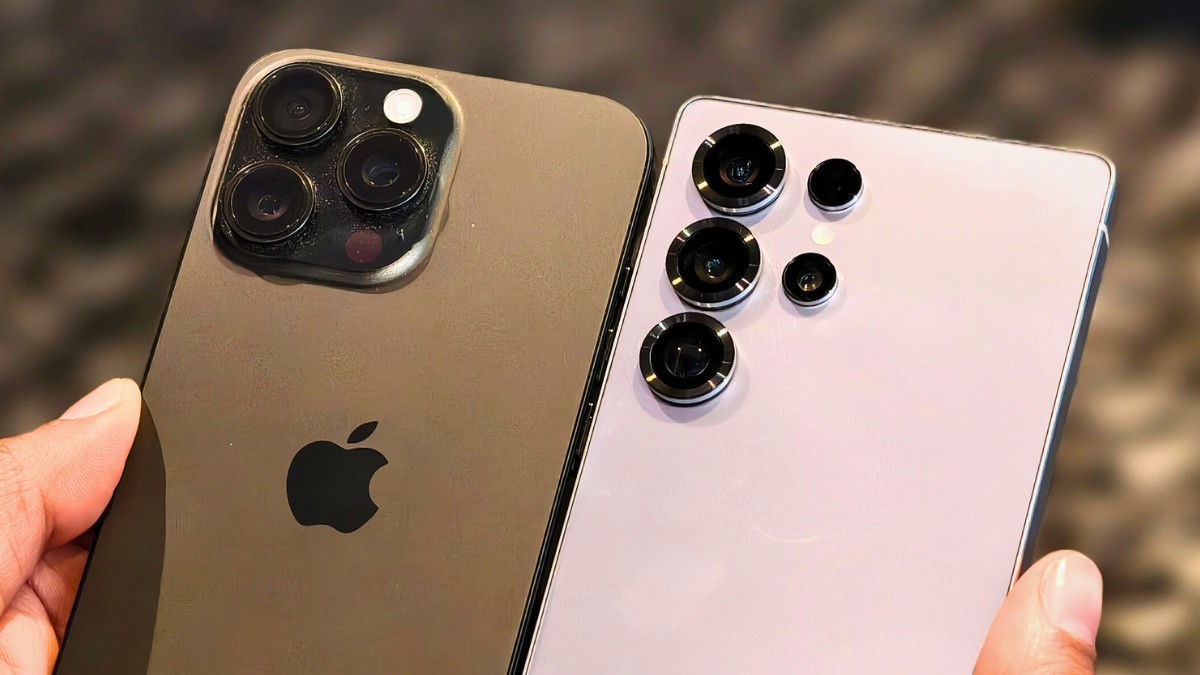Pic credit: Smartprix
Battle of the Flagships: iPhone 16, Galaxy S25 & Nothing Phone (3) Compared
The 2025 smartphone season is heating up, and three giants are going head-to-head: Apple’s iPhone 16, Samsung’s Galaxy S25, and the latest entry from Carl Pei’s innovative brand, the Nothing Phone (3). Whether you’re an iOS loyalist, an Android enthusiast, or someone looking for something fresh and futuristic, this comparison will help you decide which flagship is worth your money this year.
Let’s break down the specs and features that matter most — from performance and design to cameras and battery life.
Table of Contents
Design & Build: Premium Meets Bold
- iPhone 16
Apple sticks to its refined industrial look but slims down the bezels and introduces a lighter titanium frame across all models. Expect familiar button placements, MagSafe, and yes — still no USB-C in the base models. - Galaxy S25
Samsung continues its sleek, minimalist aesthetic with some subtle changes. The S25 features a slimmer design, flatter edges, and improved durability with Gorilla Glass Victus 3. The punch-hole camera remains, but rumors suggest an under-display selfie cam in the Ultra variant. - Nothing Phone (3)
Nothing sticks to its transparent roots but adds a more premium aluminum frame and thinner glyph lights that offer more personalization. It’s the boldest-looking phone of the bunch and definitely stands out in a sea of similar slabs. Winner: Tie — iPhone and Galaxy feel premium, but Nothing earns points for creativity.
Pic credit: Bizbuzz
Performance: Snapdragon vs Apple Silicon
- iPhone 16
Powered by the A18 Pro chip, Apple’s flagship continues to dominate in raw performance, especially in GPU-heavy tasks and AI processing. It’s a beast for mobile gaming and multitasking. - Galaxy S25
Equipped with the Snapdragon 8 Gen 4 (Global) or Exynos 2500 (select markets), the S25 delivers blazing-fast speeds and efficient power management. Samsung’s custom AI engine adds unique photo editing and multitasking perks. - Nothing Phone (3)
Rumored to feature the Snapdragon 8s Gen 3, it’s a slight step below the flagships from Apple and Samsung but offers impressive performance for daily tasks and casual gaming. Nothing’s OS 3.0 also improves fluidity and customization.
Winner: iPhone 16, but Galaxy S25 offers better balance in regions with Snapdragon chip.
Camera Showdown: The Megapixel Race Continues
- iPhone 16
A triple-lens system with improved low-light performance, AI-based image correction, and a 48MP main sensor. Expect the best video recording in the game, including cinematic mode and ProRes enhancements. - Galaxy S25
Samsung leads in zoom. With a 200MP primary sensor and an upgraded 50x periscope zoom, the S25 Ultra remains the choice for mobile photographers. Its night mode and AI scene recognition are industry-leading. - Nothing Phone (3)
A dual 50MP sensor setup with better tuning than its predecessor. While it can’t match the hardware of the other two, it delivers solid photos in good lighting and offers fun filters and fast shutter response.
Winner: Galaxy S25 — unmatched in zoom and megapixel power.
Battery & Charging
- iPhone 16
Estimated at 3,500–4,000 mAh, with better power optimization via iOS 18 and the A18 chip. Still slower wired charging (around 27W), but MagSafe improvements are coming. - Galaxy S25
Around 4,800 mAh with 45W wired and 25W wireless charging, plus reverse wireless charging. One of the fastest-charging flagships on the Android side. - Nothing Phone (3)
Roughly 4,700 mAh with 66W wired charging. Wireless charging is retained, and battery life is expected to be solid thanks to software-level tweaks.
Winner: Galaxy S25, with fast charging and strong battery endurance.
Software & Updates
- iPhone 16: iOS 18 with native AI, improved Siri, and tighter app control. Apple promises 6+ years of updates.
- Galaxy S25: One UI 7 based on Android 15, offering 7 years of updates now, catching up with Apple in longevity.
- Nothing Phone (3): Nothing OS 3.0 is lightweight, clean, and very customizable. Update policy stands at 3 years major + 4 years security.
Winner: Tie between iPhone 16 and Galaxy S25 — Nothing lags slightly behind.
Pricing & Value
- iPhone 16: Starting at around ₹89,990 ($999) — Premium pricing for the brand.
- Galaxy S25: Around ₹84,999 ($949) for the base variant. Ultra model is pricier.
- Nothing Phone (3): Expected to start at ₹39,999 ($499) — significantly cheaper, offering strong value for money.
Winner: Nothing Phone (3) — Best choice for value buyers.
Pic credit: Phone arena
Verdict: Which One Should You Buy?
- Go for iPhone 16 if you want top-tier performance, a reliable ecosystem, and unmatched video quality.
- Choose Galaxy S25 for photography, display quality, and faster charging — the all-rounder.
- Pick Nothing Phone (3) if you’re looking for a unique design, clean software, and flagship-level experience at half the price.
In the end, it all comes down to budget, preferences, and platform loyalty. No matter what you choose, 2025’s flagship lineup has something exciting for everyone.
